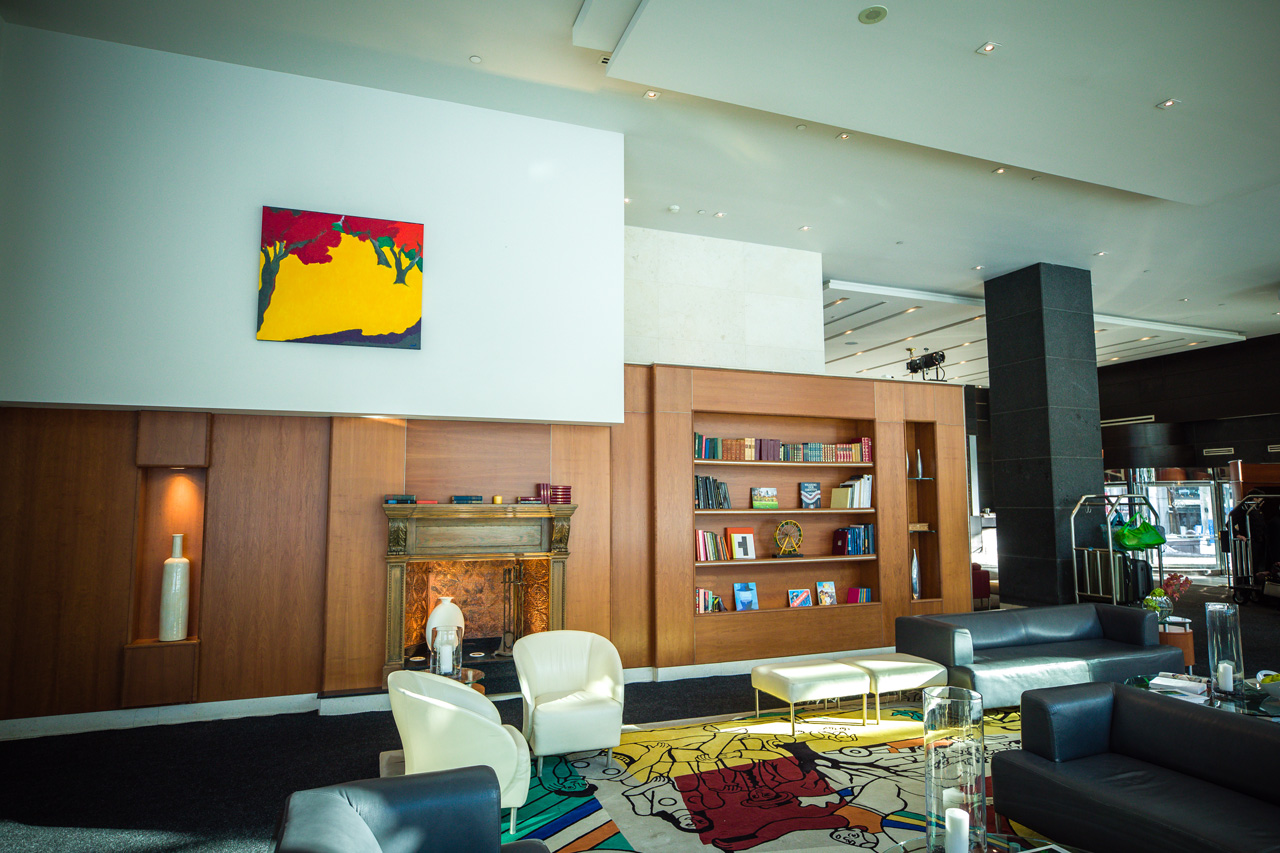• Artist : Maryse Casol
• Grumbacher oil painting on British Blueprint cotton canvas with pine wood support in the back
• Artwork painted outside in Varennes, facing the St-Laurent River
• 30" x 24" - 76 cm x 61 cm
• Signed Casol at the bottom right
• 2002
• Made in Canada
• Photos : IEGOR (2025) and Daniel Charpentier (2002)
Travel back in time to Montreal, in the province of Quebec, Canada, with the 2002 painting Méditations aux Abords du Fleuve St-Laurent by artist Maryse Casol!
2025
To give you a look into the secret collection of Maryse Casol, and almost never been seen before paintings made in Canada, on February 4, 2025, Méditations aux Abords du Fleuve St-Laurent, is finally published on MaryseCasol.com , and put for sale at Iegor Auctions, in the Canadian Art Sale ending on April 3, 2025! Thank you to the new collector!
2004
In the winter of 2004, Maryse Casol brought some of her 2002 paintings in consignment for sale, to Christiane de Livry, owner of the Artitude art gallery in Montreal, Canada. Méditations aux Abords du Fleuve St-Laurent had been kept by Maryse Casol.
2002
Your Maryse Casol 2002 collection include for you the 10 works : Évasion en Pays Catalan, Extase, Éclosion, Solitude au Crépuscule, Collines aux Environs de Port-Vendre, Solitude, Méditations aux Abords du Fleuve St-Laurent, Espérance, Collines du Perthus, and Sous-Bois Estival au Mont-Royal.
Ever since she was a child, a secret, magical and intimate dialogue with the quivering world of nature has been aroused in her as an innate reality. This innateness is a kind of sensibility predisposed to the incommensurable and ephemeral language of country life and exotic landscapes’ atmospheres. This sensibility becomes the notion of an escape to the fragile mirror of nature.
Born in France in 1957, from Italian and French origine, she graduated from Bordeaux University in foreign languages (English and Spanish). Besides, she got a higher education in literature and philosophy.
Working in tourism in daily life, Maryse Casol, in front of her ardent and persistant love for art, enrolled at the Academy Arts and Beaux-Arts in Varennes, Quebec. By the side of Sam Aberg, she received a several years comprehensive education, successfully completed, integrating classical as well as modern rhetoric of art’s compositional aesthetics, art history, and also iconographical, semiotic and philosophical notions. She also studied comparative art critic for a complete understanding of the various movements of art painting.
Her works, in a dynamic process of limpid and linear evolution open up a new way, a well-defined perspective in art, to be linked up with private and public collections.
The deepest work of an artist takes place at the boundaries of the senses and time not yet passed, where the magic silence of forms cannot be penetrated by fate. There are shapes with dense, sonorous atmospheres as far as the timeless saturation of space.
In order to penetrate time, time suspended, blurred, and sometimes forgotten in the twists and turns of chromatic brushstrokes, the artist CASOL develops awareness of the source of the ardour of her expression, in order to interpenetrate it in the perceptible echo of the shapes to be maintained. This is the poetic journey into captured silhouettes, frantically grasped, down to the least crack in the pictorial brushstroke.
Emotion and the vanishing of emotion seem to merge with primary, ephemeral time. Maryse CASOL raises this primary time dimension in the descriptive, narrative evolution of her naturalistic post-impressionist works, including Extase, Printemps éphémère, and Evasion en Pays Catalan, a kind of perissology, so that she can shake the rhythmic spectacle of nature. This means, in a way, shaking the immobility of time, the time of the objective world, without glimmer and colour, and the time of tides forgotten in the mist.
As we can see in her work, the artist treats space as a landscape for emotions, in which furtive, fleeting sensibility continues growing in the compositional apparatus of shapes and colours. In the face of Casol's pictorial reality, the subjective aesthetics of post-impressionism is perceptible only at the boundaries of unborn time, in the instantaneousness of a horizon that curves or bends under the continuous rhythm of a time scented with emotions. From the transcendence of the ascending components to the escapes of pseudo-sfumatos such as Solitudes and Collines du Perthus, the artist CASOL examines the ephemeral nature of impression down to the innermost recesses of matter, giving to her works a kind of imponderable musicality that clashes with changing chromatics in perceptible nuances of effects of light.
Sam Aberg, Winter 2003
Art books for sale, amongs other stores, at the Montreal Museum of Fine Arts

This site is protected by reCAPTCHA and the Google Privacy Policy and Terms of Service apply.